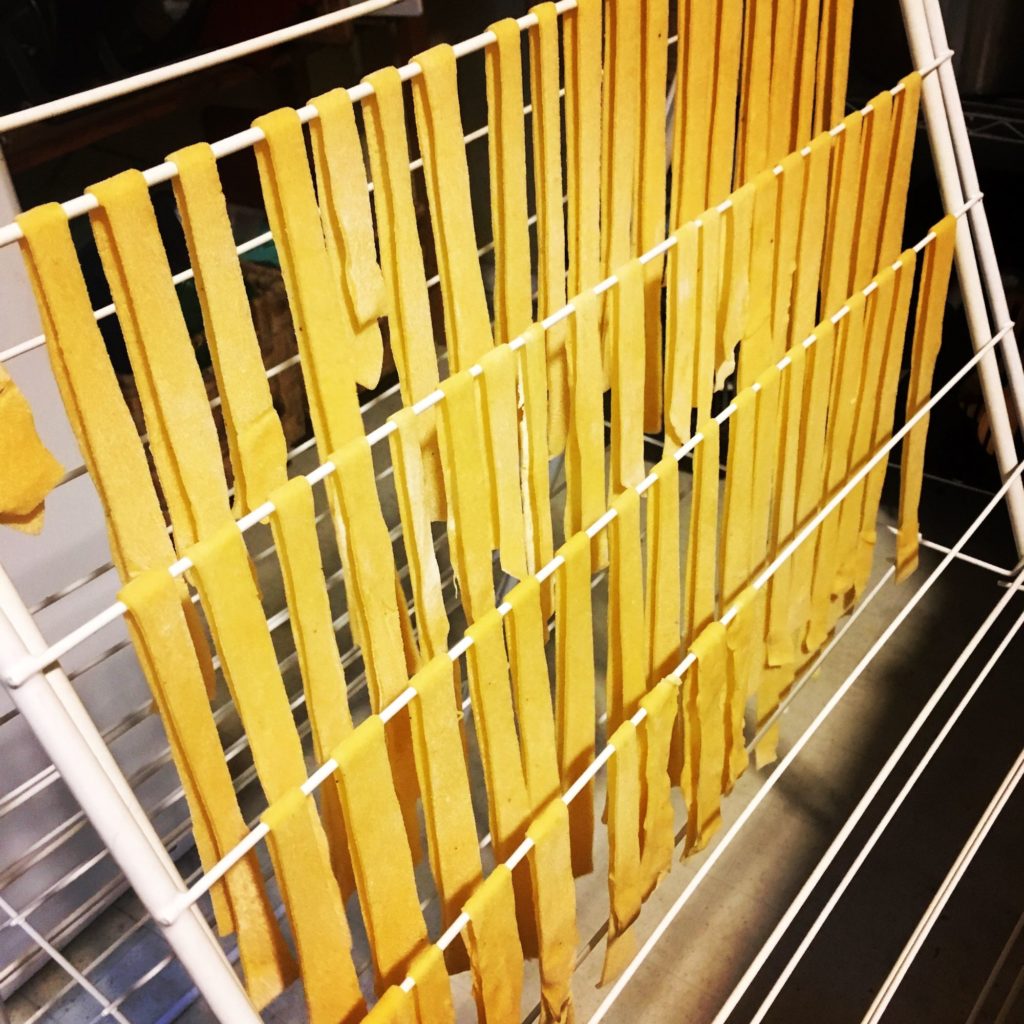
I’ve been making fresh pasta on and off for about two years now. It’s been a long, steep learning curve with a lot of lumpy, feathery or overly-elastic balls of dough destined for the trash bin. Many weekends I would despair that the process is too arcane to be learned from a book and that the tactile magic required to make it like some Piedmontese nona would require a bankrupting trip to the motherland, or at the very least a couple of weeks worth of classes.
But I kept at it, spurred on by the near-pornographic descriptions of fresh pasta making and eating found in audiobooks like Bill Buford’s Heat and Pasta, Pane, Vino: Deep Travels Through Italy’s Food Culture by Matt Goulding. Little by little I got better, mostly by scaling back my efforts to just the simplest recipes and easiest shapes and focusing on my technique, checking at every stage to make sure the texture of my dough matched the descriptions I would read in The Pasta Bible or the fantastic Cooking By Hand by Paul Bertolli.
Simplicity was the key: Good flour and good eggs were a must. Slow deliberate movements helped to teach my fingers to feel the proper consistency of my dough. A wood board to work on actually made a huge difference! And choosing the easiest shapes to make my little noodle babies gave me a lot of confidence because, well… They were harder to screw up.
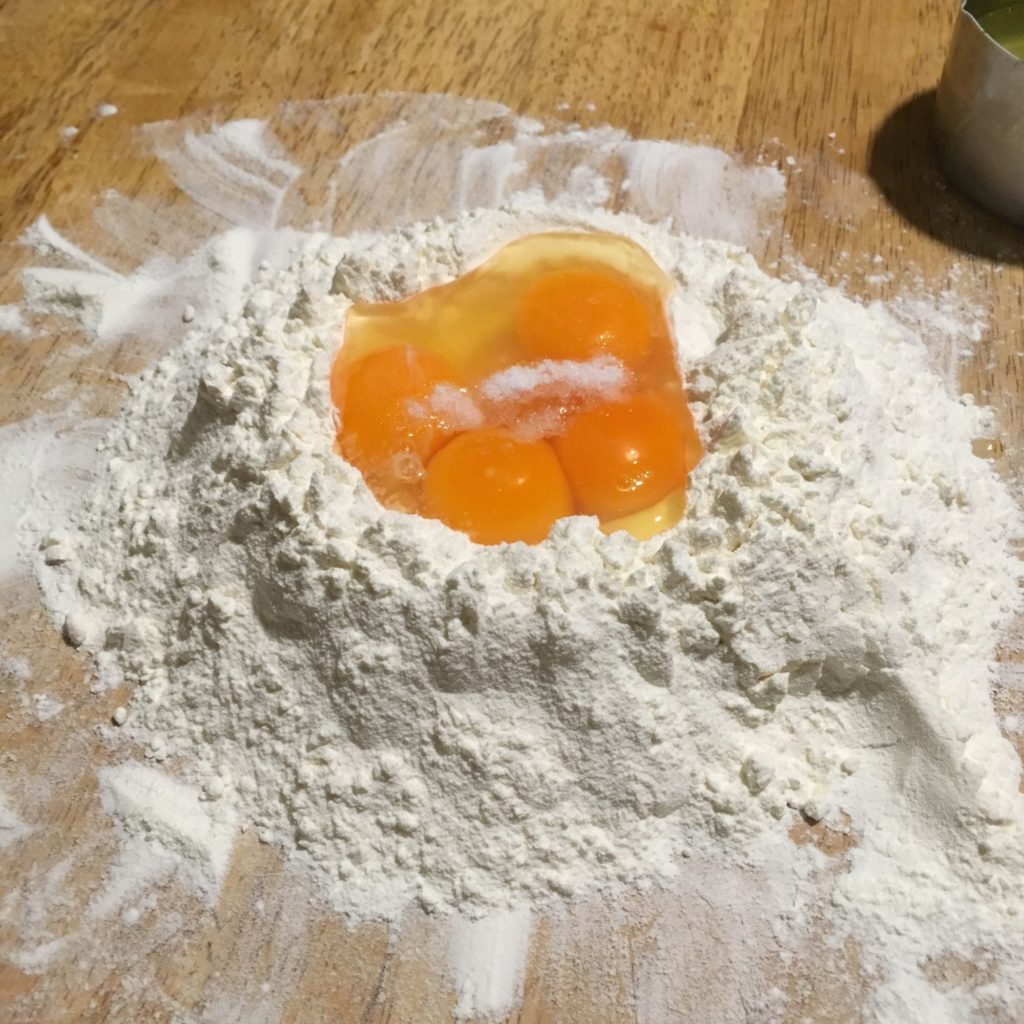
My go-to fresh pasta dough recipe comes straight out of The Pasta Bible and works very well for a variety of pasta shapes. It’s a very eggy dough, rich and bright yellow. I’ve brought it along to work and shared it with my family during a recent trip to Ontario. One of the reasons I’m posting it here is because my brother was inspired to try his hand at it and I wanted something he could reference on his flour-dusted phone at 6:30pm on a Thursady night.
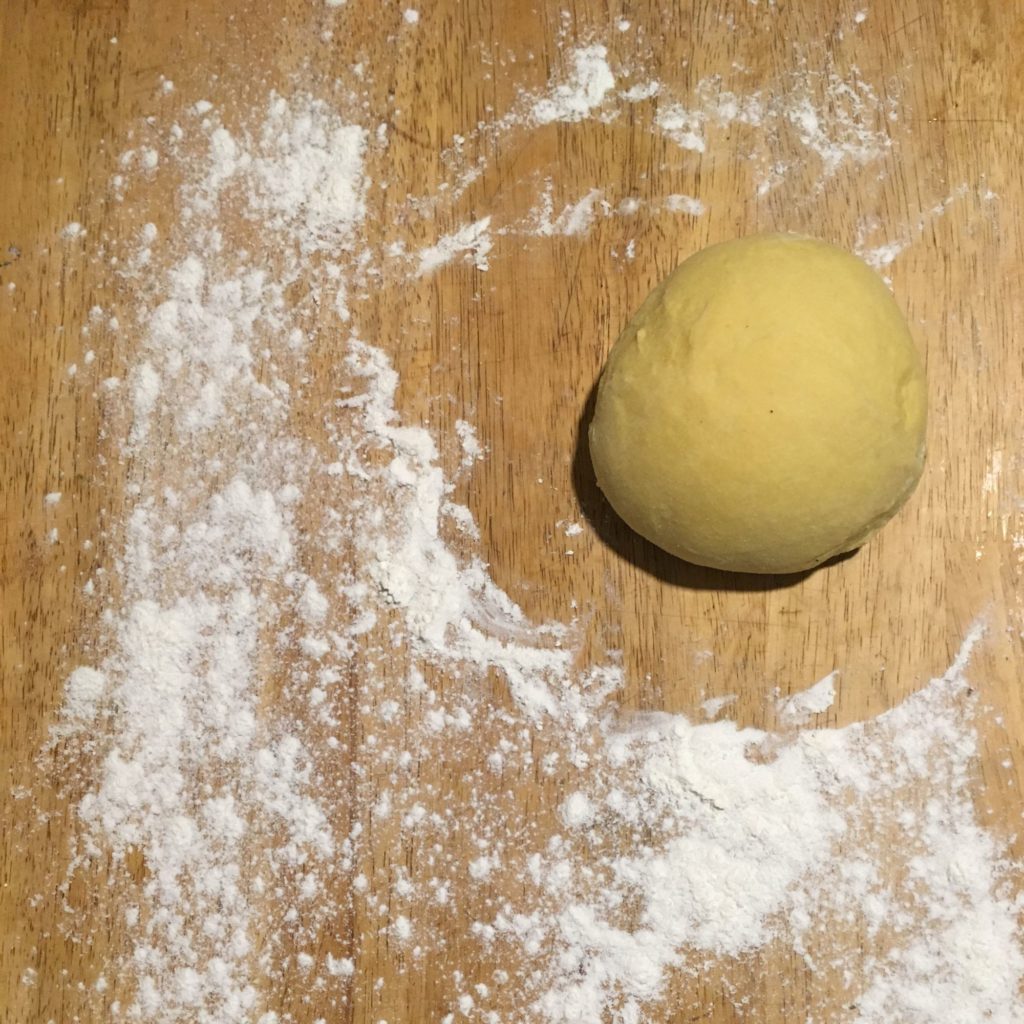
Fresh Pasta (Serves 6)
Ingredients
2 1/3 cups (275g) Italian Super Fine “00” Flour
7 Egg Yolks
1 Eggs
1 Tsp. (5ml) Olive Oil
1/2 Tsp. (2 g) Salt
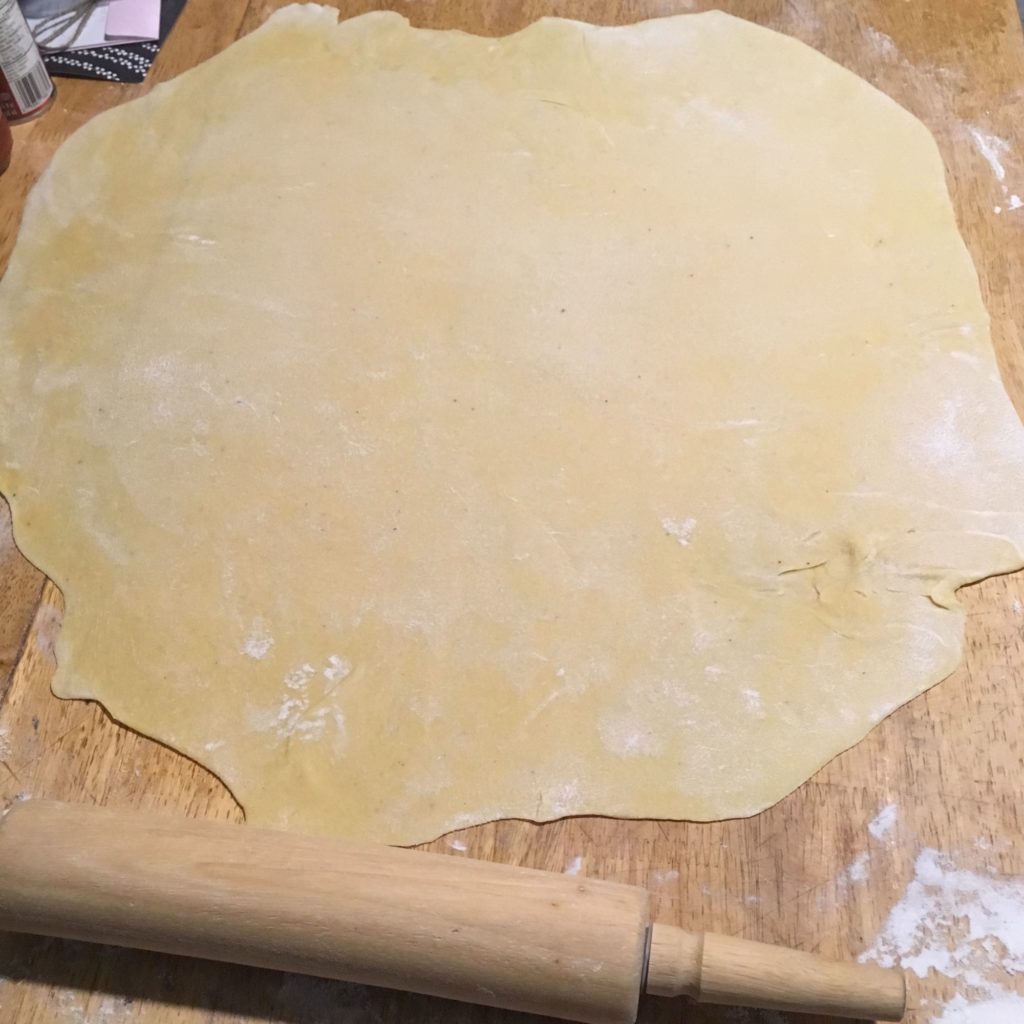
Method
Clear off a large wooden surface for your pasta making theatre of operations. Pour your flour into as tall and together a pile as you can. Push your fingers into the top of the pile and slowly dig down, widening out the pile until it has a little well dug into it’s top. I like to think of it as a mountain-top swimming pool, but a volcano is probably a better analogy. Crack your eggs and egg yolks into the well along with your oil and salt.
Using a your fingers or a fork, slowly tease bits of the floury edge into the egg mixture. Don’t worry if some eventually breaks free and dribbles down your pile, it’ll all end up together in the end. Keep adding more of the flour into the oil until it starts to form a paste. Now gather the remaining flour around the outside with your hands and mix the whole mess together. This is the stickiest part of the process as you slowly work the liquid into the flour making a gummy yet feathery dough so if you feel the dough sticking hit your whole work surface with a couple fistfulls of flour. If the dough still seems feathery and rough after a couple minutes of mixing just add a couple teaspoons of water until it starts to become more smooth.
Roll the dough into a ball, then smoosh the ball with the palms of your hands. Turn the now-elongated dough 90°, fold it over and smoosh it again. Repeat the turn and smoosh movement for the next ten minutes or until the surface of your dough becomes smooth. Press your knuckles into the surface of your now-smooth dough and watch how much the dough springs back into it’s original shape. This springiness is no good, keep kneading until the knuckle marks stay in the dough’s surface. Once it’s firm wrap it up with some plastic wrap or cover it with a towel and leave it on your work surface for 1 hour.
Use the palm of your hand to push the ball of dough into as flat and symmetrical a circle as you can (don’t worry if it looks weird… It ‘s just rustic!) and grab a large rolling pin. Roll the dough out in whatever direction gets it thinnest. Grab this oblong bit of dough and drag a corner to the edge of the surface you are working at. Tuck a corner of your dough over the edge and use your leg to hold it in place while you roll outwards from your body. This is an old nona trick that works well to get the dough nice and thin.
Keep your rolling radiating outward from your leg and the dough will get thinner and thinner with every pass. Check along the edge for any thicker parts and roll them out until the entire sheet of dough is the same paper-thinness. Generously dust the sheet of dough with flour and cut it into whatever shape suits your fancy.
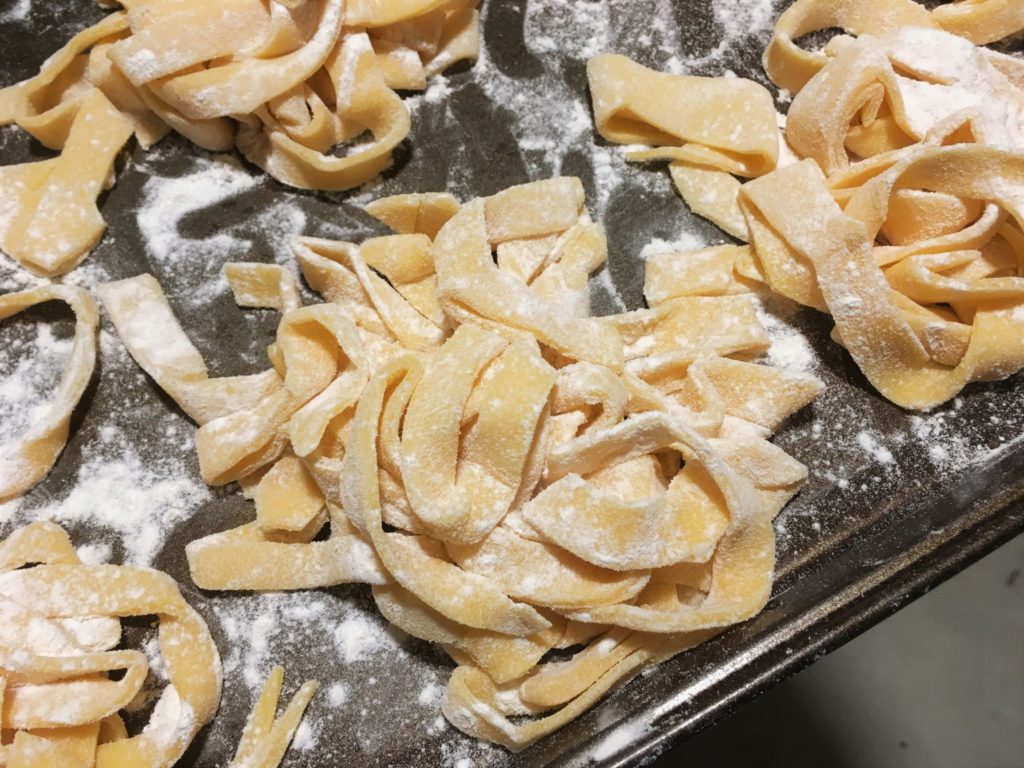
Here are some of my favourites:
Tagliatelle – Cut the sheet in half lengthwise and wrap up each half like a carpet. Slice into 1/4 inch strips and delicately scoop them up into your hand to form a palm-sized nest. Each nest feeds one person.
Papardelle – Same as above, just slice into 3/4 to 1 inch wide strips.
Lasagne – It can be done at home! Just cut your unrolled sheet of pasta into 4-6 inch squares or rectangles that can be layered with filling between them and baked.
Cooking and saucing your pasta is a whole other conversation.
Music To Roll Pasta To: Tycho – Weather (Pick it up Here @ Amazon)
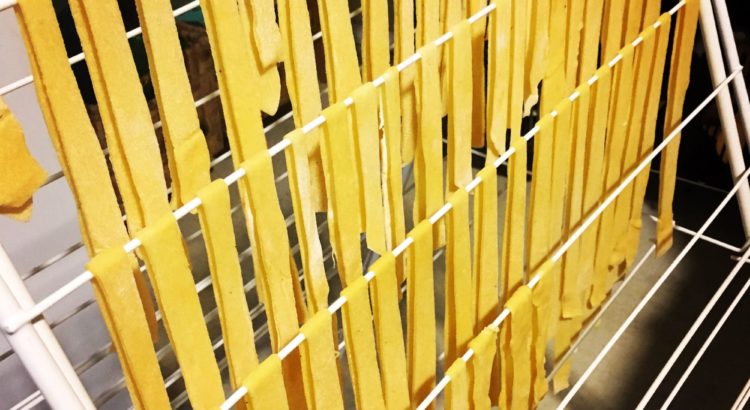
We had a good time together while you and Andrew made pasta and Ragu sauce. It was so good tasting. Your persistence in learning to perfect your skills is commendable. So proud!!! Thanks for sharing Shawn. Love you Mom